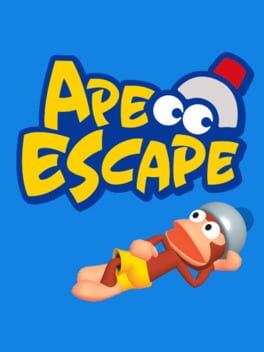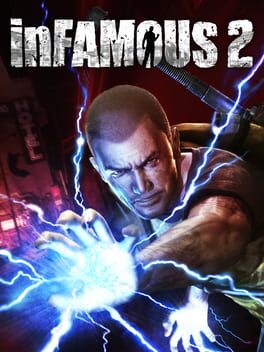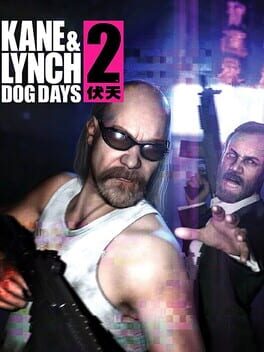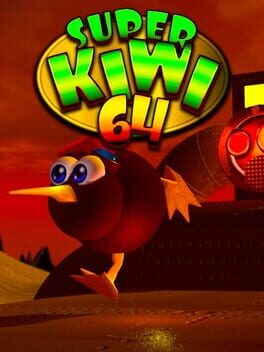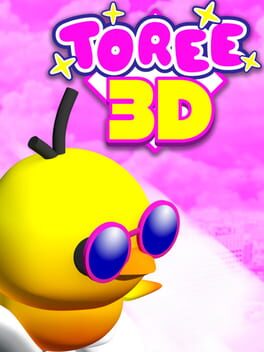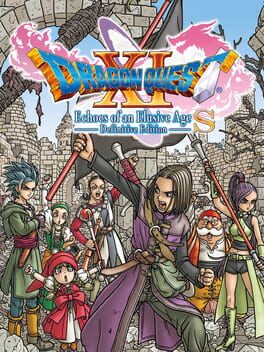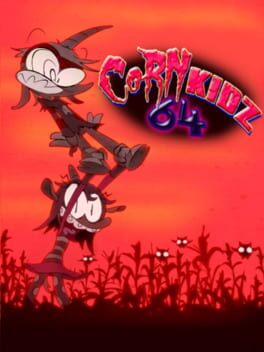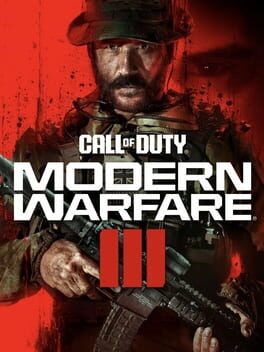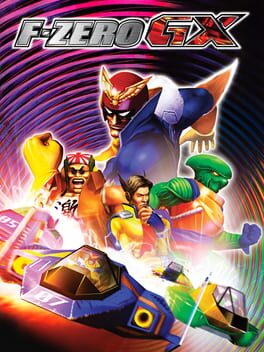2022
This is one of those old Playstation exclusives that makes me wish I had a PS2 growing up cuz I would've been obsessed with this as a kid. Kinda the ideal of this era's scrimblo platformer/action games in that it's just as fun and inventive all-throughout as its personality would make you expect. Excited to try the sequel.
2007
By the time I was on my final play session I thought I was used to this game's bullshit. I'd had the guts, got the glory, and felt like I knew all its tricks until the last mission where I was thrust into a brief New Goblin tutorial before playing as him in a Sandman punch-out boss fight. This is the game that just keeps on giving.
2011
Definitely an improvement over the last game but God does it still have the same repetition issue that plagues the first game. There was clearly a lot of work put into polishing and tightening the gameplay loop as I found combat and mobility to be immediately more engaging--as well as the fact that this game is not nearly as ugly as its predecessor--but by the time I was in the final stretch and I was still doing the same "power the generators" or "protect the cargo" missions that are not much more than fending off hordes of enemies for however long I was 100% checked out. Thankfully the final mission brought me back a little since it offers a genuinely interesting (and impactful) moral choice while also just being pretty fun all-together.
Again, definitely an improvement but God I wish it were tighter. Hopefully Second Son is more up my alley.
Again, definitely an improvement but God I wish it were tighter. Hopefully Second Son is more up my alley.
Got this cuz of Jacob Geller’s description from an older video about how it portrayed “true, uncompromising ugliness”. And while that is certainly true for the visual/audio style and some of the story beats, it doesn’t really change the fact that it’s most abrasive qualities are it’s only interesting ones.
This isn’t much more than a really mediocre 7th generation cover-shooter with a genuinely impressive presentation. And I wanna be clear that it is impressive as it’s a pre- The Last of Us / pre- Spec Ops: The Line video game that successfully adopts a cinematic visual styling that enhances both the cutscenes and moment-to-moment gameplay. The digital grain that gets more intense in darkness, the blinding lens flares, the fact that the camera shakes so much when running or when in a gunfight that it feels like the cameraman is always trying to catch-up with the player; all of it is top-notch. I just can’t help but think that if this aesthetic was applied to a different game that had a more engaging gameplay loop, or even if the writing could match that same artistry, then this could’ve been something really special.
This isn’t much more than a really mediocre 7th generation cover-shooter with a genuinely impressive presentation. And I wanna be clear that it is impressive as it’s a pre- The Last of Us / pre- Spec Ops: The Line video game that successfully adopts a cinematic visual styling that enhances both the cutscenes and moment-to-moment gameplay. The digital grain that gets more intense in darkness, the blinding lens flares, the fact that the camera shakes so much when running or when in a gunfight that it feels like the cameraman is always trying to catch-up with the player; all of it is top-notch. I just can’t help but think that if this aesthetic was applied to a different game that had a more engaging gameplay loop, or even if the writing could match that same artistry, then this could’ve been something really special.
2022
Siactro's best game (that I've played) so far. Works super well as a tight, old-school collect-a-thon that honestly feels a lot more complete than their other games. What definitely helps also is that the flow of movement is just that good, blasting through each world feels more like a reward than an inevitability.
2021
I cannot recommend getting the platinum trophy for this game like I did.
That's not to say I didn't like it. I mean I wouldn't have put nearly 150 hours into this if I thought it was anything less than great. I'm just saying that I can't recommend people go through the countless hours of maxxing out armor and weapons, mindlessly searching for quest items, looking up different boss strategies, trying to get a jackpot in that goddamn casino, etc. as it can be extremely taxing both mentally and physically. I felt burnt out by the end in a way that I have a hard time comparing to anything else.
I've binged other games before, even other rpgs; but I usually bang out the story quickly and get a healthy amount of side content in before calling it quits. Yet idk what happened here, I started playing this game at the beginning of November and only finished it just last week. I wanna say that I didn't know what I was in for despite vaguely knowing about the game's "epilogue", but in all honesty it was a mix of feeling a "sunk cost fallacy" with the amount of time I had already put into the side content as well as just being so genuinely invested in the world and characters that I almost felt scared to leave them without doing everything the game had to offer.
And that's when I start to think, "do I regret 100%'ing this game?" Some parts of me say yes, as I could've spent that lost time with other games or movies or with friends/family or really anything else. But when I really think about it I think I'll come to be happy that I did finish it in the way I did. I don't 100% games often, especially jrpgs (this might be my first in that regard); but I find that the ones do fully complete are the games that feel important in one way or another. And even if this game isn't one of my all-time favorites in the genre, I can't deny just how much I've learned and grown because of it in the few months since starting my playthrough.
I didn't want to leave my party behind as I had grown attached to every single one of them very naturally. They might not as complex as Xenoblade characters, but they're my friends and I cherished them nonetheless. And once the credits rolled, I felt at peace knowing that I did everything I could for them to live happily. It might sound corny but I even dreamt about them a little afterwards, seeing pieces of how they continued with their lives through my own interpretations of them.
Again, it brings me back to the power of videogames as an artform. You are the one controlling not just the pace of the story but also how you interact with the world and it's people. It's not just about intuitive mechanics and grand story beats, but moreso how you express yourself within someone else's fantasy. And that philosophy will always speak to me.
Edit: I’ve been thinking about this game consistently since I finished it and after ruminating on it some more (especially after the unfortunate passing of Akira Toriyama making me reflect on just how much I loved the characters he designed) I’ve come to terms with the fact that this is a very important game to me. Absolutely one of my new favorites.
That's not to say I didn't like it. I mean I wouldn't have put nearly 150 hours into this if I thought it was anything less than great. I'm just saying that I can't recommend people go through the countless hours of maxxing out armor and weapons, mindlessly searching for quest items, looking up different boss strategies, trying to get a jackpot in that goddamn casino, etc. as it can be extremely taxing both mentally and physically. I felt burnt out by the end in a way that I have a hard time comparing to anything else.
I've binged other games before, even other rpgs; but I usually bang out the story quickly and get a healthy amount of side content in before calling it quits. Yet idk what happened here, I started playing this game at the beginning of November and only finished it just last week. I wanna say that I didn't know what I was in for despite vaguely knowing about the game's "epilogue", but in all honesty it was a mix of feeling a "sunk cost fallacy" with the amount of time I had already put into the side content as well as just being so genuinely invested in the world and characters that I almost felt scared to leave them without doing everything the game had to offer.
And that's when I start to think, "do I regret 100%'ing this game?" Some parts of me say yes, as I could've spent that lost time with other games or movies or with friends/family or really anything else. But when I really think about it I think I'll come to be happy that I did finish it in the way I did. I don't 100% games often, especially jrpgs (this might be my first in that regard); but I find that the ones do fully complete are the games that feel important in one way or another. And even if this game isn't one of my all-time favorites in the genre, I can't deny just how much I've learned and grown because of it in the few months since starting my playthrough.
I didn't want to leave my party behind as I had grown attached to every single one of them very naturally. They might not as complex as Xenoblade characters, but they're my friends and I cherished them nonetheless. And once the credits rolled, I felt at peace knowing that I did everything I could for them to live happily. It might sound corny but I even dreamt about them a little afterwards, seeing pieces of how they continued with their lives through my own interpretations of them.
Again, it brings me back to the power of videogames as an artform. You are the one controlling not just the pace of the story but also how you interact with the world and it's people. It's not just about intuitive mechanics and grand story beats, but moreso how you express yourself within someone else's fantasy. And that philosophy will always speak to me.
Edit: I’ve been thinking about this game consistently since I finished it and after ruminating on it some more (especially after the unfortunate passing of Akira Toriyama making me reflect on just how much I loved the characters he designed) I’ve come to terms with the fact that this is a very important game to me. Absolutely one of my new favorites.
2023
Incredibly solid n64 era platformer. I'm not as familiar with the indie scene for this genre as I wish I was, so I can't speak to how revolutionary this is in the grand scheme of things. However, as someone who has played a number of the classic collect-a-thons (especially Banjo-Kazooie which this is clearly inspired by) and a good amount of indie 3D platformers--i.e. Demon Turf, Toree 2, Spark 3, A Hat in Time, etc.--this is one that I'd really love to see more of.
There's so much life in its environment and characters, and the mechanics are beautifully versatile without feeling overwhelming. I understand that the dev team is very small and this probably didn't have much money behind it, but there's so much intelligence and creativity packed into such a short experience that I'd seriously love a true follow up that could really let them strut their stuff. As is though, this is still awesome. And I'm glad I found out about it just now cuz after playing 140 hours of Dragon Quest 11 S I really needed something simple and tight.
There's so much life in its environment and characters, and the mechanics are beautifully versatile without feeling overwhelming. I understand that the dev team is very small and this probably didn't have much money behind it, but there's so much intelligence and creativity packed into such a short experience that I'd seriously love a true follow up that could really let them strut their stuff. As is though, this is still awesome. And I'm glad I found out about it just now cuz after playing 140 hours of Dragon Quest 11 S I really needed something simple and tight.
The Legend of Zelda: Breath of the Wild changed everything. That much we know. Since it’s release in 2017 not only have the core design philosophies surrounding open-world games taken great consideration from it, but even general discussion about these games has shifted greatly. “How does this compare to Breath of the Wild?” is the question on everyone’s mind the moment they start a new AAA game that boasts a “vast, fully explorable open-world”. And this makes sense of course, a game so good that it completely revolutionizes how audiences and artists alike comprehend video games as a medium is not something that can be easily forgotten. But that just begs the question: where do you go from there? How do you adapt to the revolution?
Well, many games simply worked off of BotW’s central themes/concepts as a base for something more identifiable. Games like Sonic Frontiers, Pokémon Scarlet & Violet, Bowser’s Fury, and Ghost of Tsushima (to my knowledge) all take the BotW formula and retrofit it into their very specific gameplay loop without truly breaking that core design. On the other side of the coin, there are games like Death Stranding and Elden Ring which worked to innovate upon and even fundamentally challenge that design philosophy. For better or worse, these are the games that saw the potential in Zelda’s groundwork and totally expanded upon what exactly could be accomplished artistically from it. And I believe that’s exactly what Tears of the Kingdom does as well.
In the 7ish months since I’ve beat the game (and started this review), I’ve seen many people come out of the woodwork to profess their “hot take” that TotK is not as special as BotW as it takes place in the same Hyrule and therefore a lot of the magic is lost. Disregarding how this oversimplifies the work put into making said world feel much richer with the addition of the depths and sky world, the innumerable structural changes to the landscape (i.e. caves, wells, etc.), and just a general better handling of towns and NPCs that make even the most insignificant areas feel alive; the real meat of the game, the reason why this couldn’t have been another story expansion are the Zonai abilities.
In BotW, the Sheikah runes acted as a physics-based toolset that allowed the player to both physically and mentally explore everything the game had to offer through simple experimentation. Rarely could the runes be truly used in conjunction with each other, but people were able to find creative ways to break the game regardless. Tears of the Kingdom, very smartly, opts out of adding onto these runes and instead creates a whole new toolset that shoves simplicity to the side in favor of more explicit player freedom.
Ultrahand is quite possibly one of the most interesting and versatile mechanics I’ve ever witnessed in a game. Taking the very act of crafting (an already tired trope of many open-world games) and applying to it the very same unrestricted philosophy that the game-world is built off of is frankly genius. Being able to construct any object, vehicle, machine, etc. you can dream up on the fly and apply it to your current situation changes the gameplay loop so drastically from BotW that I’m honestly surprised that there is as strong a pushback as there is (relatively speaking of course). And it’s not even like the dev team just threw this in here as a last ditch effort for variety, everything is fundamentally tied to your abilities as a craftsman. Zonai shrines, Korok puzzles, combat, dungeon exploration, and even basic traversal are all reliant on this mechanic. Yet it refuses to hold your hand at any point.
Let me share a moment I once had in the game: I was in a shrine (can’t remember the name) where the puzzle was to use the nearby tiles to make some device that could slide along a suspended railroad to the end. Now I couldn’t for the life of me figure out what I had to make. I tried many different combinations and whatnot but just couldn’t get it. I was very close to admitting defeat and looking up the solution, but then I had an idea. I remembered from earlier that I could grind on rails while shield-surfing. So after fusing (another game-changing ability) one of the tiles to my shield for added smoothness, I surfed on one the the suspended rails (jumping occasionally to keep momentum) until I gained enough height and distance to glide over to the end. In no conceivable way was this an intended solution, and yet I felt immense pride and joy for doing it. I felt as if I had actually learned from the game and utilized its toolset through my own methods. I got out what I put in, and that philosophy was present through all 150+ hours and will be still be there when I eventually replay (which I’m already itching to do).
Well, many games simply worked off of BotW’s central themes/concepts as a base for something more identifiable. Games like Sonic Frontiers, Pokémon Scarlet & Violet, Bowser’s Fury, and Ghost of Tsushima (to my knowledge) all take the BotW formula and retrofit it into their very specific gameplay loop without truly breaking that core design. On the other side of the coin, there are games like Death Stranding and Elden Ring which worked to innovate upon and even fundamentally challenge that design philosophy. For better or worse, these are the games that saw the potential in Zelda’s groundwork and totally expanded upon what exactly could be accomplished artistically from it. And I believe that’s exactly what Tears of the Kingdom does as well.
In the 7ish months since I’ve beat the game (and started this review), I’ve seen many people come out of the woodwork to profess their “hot take” that TotK is not as special as BotW as it takes place in the same Hyrule and therefore a lot of the magic is lost. Disregarding how this oversimplifies the work put into making said world feel much richer with the addition of the depths and sky world, the innumerable structural changes to the landscape (i.e. caves, wells, etc.), and just a general better handling of towns and NPCs that make even the most insignificant areas feel alive; the real meat of the game, the reason why this couldn’t have been another story expansion are the Zonai abilities.
In BotW, the Sheikah runes acted as a physics-based toolset that allowed the player to both physically and mentally explore everything the game had to offer through simple experimentation. Rarely could the runes be truly used in conjunction with each other, but people were able to find creative ways to break the game regardless. Tears of the Kingdom, very smartly, opts out of adding onto these runes and instead creates a whole new toolset that shoves simplicity to the side in favor of more explicit player freedom.
Ultrahand is quite possibly one of the most interesting and versatile mechanics I’ve ever witnessed in a game. Taking the very act of crafting (an already tired trope of many open-world games) and applying to it the very same unrestricted philosophy that the game-world is built off of is frankly genius. Being able to construct any object, vehicle, machine, etc. you can dream up on the fly and apply it to your current situation changes the gameplay loop so drastically from BotW that I’m honestly surprised that there is as strong a pushback as there is (relatively speaking of course). And it’s not even like the dev team just threw this in here as a last ditch effort for variety, everything is fundamentally tied to your abilities as a craftsman. Zonai shrines, Korok puzzles, combat, dungeon exploration, and even basic traversal are all reliant on this mechanic. Yet it refuses to hold your hand at any point.
Let me share a moment I once had in the game: I was in a shrine (can’t remember the name) where the puzzle was to use the nearby tiles to make some device that could slide along a suspended railroad to the end. Now I couldn’t for the life of me figure out what I had to make. I tried many different combinations and whatnot but just couldn’t get it. I was very close to admitting defeat and looking up the solution, but then I had an idea. I remembered from earlier that I could grind on rails while shield-surfing. So after fusing (another game-changing ability) one of the tiles to my shield for added smoothness, I surfed on one the the suspended rails (jumping occasionally to keep momentum) until I gained enough height and distance to glide over to the end. In no conceivable way was this an intended solution, and yet I felt immense pride and joy for doing it. I felt as if I had actually learned from the game and utilized its toolset through my own methods. I got out what I put in, and that philosophy was present through all 150+ hours and will be still be there when I eventually replay (which I’m already itching to do).
Pretty decent sidescroller with a lot to like, but in all honesty I have a hard time understanding the overwhelming praise this is getting.
For every major change it brings to the incredibly decayed field that is 2D Mario, the game never feels like it's able to truly relieve itself of its own shackles. Nearly every level is still a straight-shot to the goalpost where you encounter level-specific enemies, one-time gimmicks, and semi-out of the way collectables. You do this 5-10 times and then fight the castle boss (sometimes with an airship in the middle) and repeat until the game’s over. The best moments are when you’re able to break from that formula.
Every world has at least one section that allows you to explore an assortment of levels in any given order, working like a more condensed version of traditional 3D Mario structure. This culminates in the desert world as it is almost entirely dedicated to this freeform layout. When you’re given a varied amount of levels and trials (i.e. scavenger hunts, gauntlets, badge tests, etc.) to complete or ignore with total player discretion it feels great. I’m not one to act like video games as a whole need to factor in player freedom for the sake of it, but I feel that something as flexible and simple as Mario works best when it’s made with the same design philosophy as a kid in a sandbox. There’s a reason why the collect-a-thon formula caught on immediately.
But even with that, I don’t think that the whole game needed to be open-structure to work more for me. There’s a mountain-themed world where Bowser Jr. isn’t the focus, but instead it’s centered around overcoming a series of olympic trials in order to “earn” the royal seed. This isn’t much more than just a thematic reason for the game’s most linear world by far (outside of having to find the secret exit in order to truly beat the final stage), but it works to make it all feel more significant than most of the other worlds.
There’s a handful of other good ideas: the poison and lava worlds adopt a sort of maze-like structure that requires more careful exploration, each world is connected by sectioned off beach area that feeds into the final stretch to Bowser, and the aforementioned trials are a very clever and fun break from the traditional levels that make up most of the adventure. These were the elements that impressed me in one way or another. But whenever I was just going through the motions of running through whimsical obstacle courses on the way to a boss fight, I couldn’t help but just think “I could be playing Super Mario World instead right now.”
For every major change it brings to the incredibly decayed field that is 2D Mario, the game never feels like it's able to truly relieve itself of its own shackles. Nearly every level is still a straight-shot to the goalpost where you encounter level-specific enemies, one-time gimmicks, and semi-out of the way collectables. You do this 5-10 times and then fight the castle boss (sometimes with an airship in the middle) and repeat until the game’s over. The best moments are when you’re able to break from that formula.
Every world has at least one section that allows you to explore an assortment of levels in any given order, working like a more condensed version of traditional 3D Mario structure. This culminates in the desert world as it is almost entirely dedicated to this freeform layout. When you’re given a varied amount of levels and trials (i.e. scavenger hunts, gauntlets, badge tests, etc.) to complete or ignore with total player discretion it feels great. I’m not one to act like video games as a whole need to factor in player freedom for the sake of it, but I feel that something as flexible and simple as Mario works best when it’s made with the same design philosophy as a kid in a sandbox. There’s a reason why the collect-a-thon formula caught on immediately.
But even with that, I don’t think that the whole game needed to be open-structure to work more for me. There’s a mountain-themed world where Bowser Jr. isn’t the focus, but instead it’s centered around overcoming a series of olympic trials in order to “earn” the royal seed. This isn’t much more than just a thematic reason for the game’s most linear world by far (outside of having to find the secret exit in order to truly beat the final stage), but it works to make it all feel more significant than most of the other worlds.
There’s a handful of other good ideas: the poison and lava worlds adopt a sort of maze-like structure that requires more careful exploration, each world is connected by sectioned off beach area that feeds into the final stretch to Bowser, and the aforementioned trials are a very clever and fun break from the traditional levels that make up most of the adventure. These were the elements that impressed me in one way or another. But whenever I was just going through the motions of running through whimsical obstacle courses on the way to a boss fight, I couldn’t help but just think “I could be playing Super Mario World instead right now.”
Definitely one of the better licensed games of its era. Very simple in its design and mechanics but everything feels satisfying enough to be rewarding and just bullshit enough to keep you humble. Genuinely shocked by how much I enjoyed it. Damn shame that these guys never got to finish their original trilogy game.
2023
A mostly solid and enjoyable 2D Sonic game with some decently creative level design, fun character mechanics, and just an overall brisk pace. The Chaos powers are easily the best aspect of the game, and are something that I think should be expanded upon in the future. Honestly a solid effort all-around… if you don’t count the fact that this has maybe the worst lineup of boss in the series.
I have played 40 total Sonic games, missing only a dozen of the most obscure or irrelevant entries, and I’m pretty confident in calling the boss fights here some of the absolute least fun this franchise has ever offered. Without fail every single one takes so much longer than it should because unlike many other Sonic bosses, the ones here only allow one hit at a time. Meaning that in-between every potential hit point against the boss you have to wait for it to cycle through its entire attack pattern or scripted moment (the Fang boss in the Golden Factory Zone is especially egregious) before getting another hit in. Sucks major ass, ESPECIALLY when the fucking fight has two phases (both of which having the same amount of health as a regular boss) with no checkpoints to speak of. Can’t tell you just how long some of the last few bosses took me. That Super Sonic fight against the Dragon might not be the worst offender (Fang’s final is psychotic), but after all the shit I went through just to get there made me nearly return the game. Had to hold off for a week, play Spider-Man 2, and watch a guide on YT before finally beating it. Genuinely have no clue what they were thinking.
I thought Dimps was dead but shit man Arzest really looking to pick up where they left off.
I have played 40 total Sonic games, missing only a dozen of the most obscure or irrelevant entries, and I’m pretty confident in calling the boss fights here some of the absolute least fun this franchise has ever offered. Without fail every single one takes so much longer than it should because unlike many other Sonic bosses, the ones here only allow one hit at a time. Meaning that in-between every potential hit point against the boss you have to wait for it to cycle through its entire attack pattern or scripted moment (the Fang boss in the Golden Factory Zone is especially egregious) before getting another hit in. Sucks major ass, ESPECIALLY when the fucking fight has two phases (both of which having the same amount of health as a regular boss) with no checkpoints to speak of. Can’t tell you just how long some of the last few bosses took me. That Super Sonic fight against the Dragon might not be the worst offender (Fang’s final is psychotic), but after all the shit I went through just to get there made me nearly return the game. Had to hold off for a week, play Spider-Man 2, and watch a guide on YT before finally beating it. Genuinely have no clue what they were thinking.
I thought Dimps was dead but shit man Arzest really looking to pick up where they left off.
2003
2019
I’m thoroughly convinced that the (classic) series formula of exploring a spooky location and using small tools and trinkets to solve cryptic puzzles while dodging un-killable monsters is just perfect. Such an infectious gameplay loop that not only am I confident in wanting to play nearly every other game in this series, but also desperate to try other horror games despite how apprehensive I’ve been towards them before. Any difficulty issues aside (normal is a bit too easy with auto saving to be scary), this is just the best.
Also it’s got a dual story like Sonic Adventure 2 so it’s automatically great.
Also it’s got a dual story like Sonic Adventure 2 so it’s automatically great.
